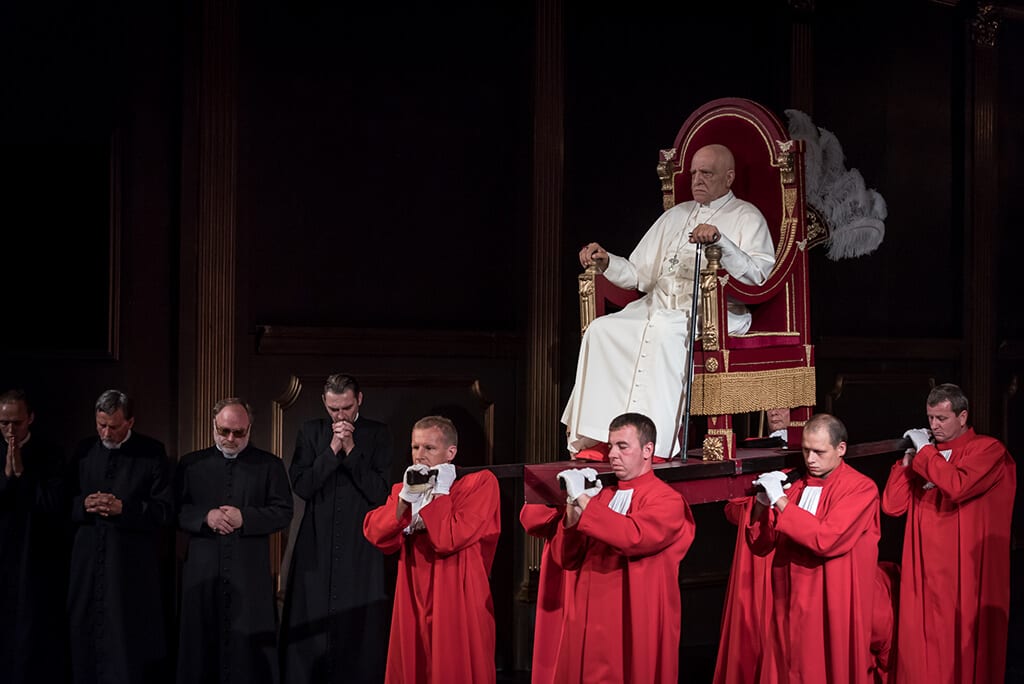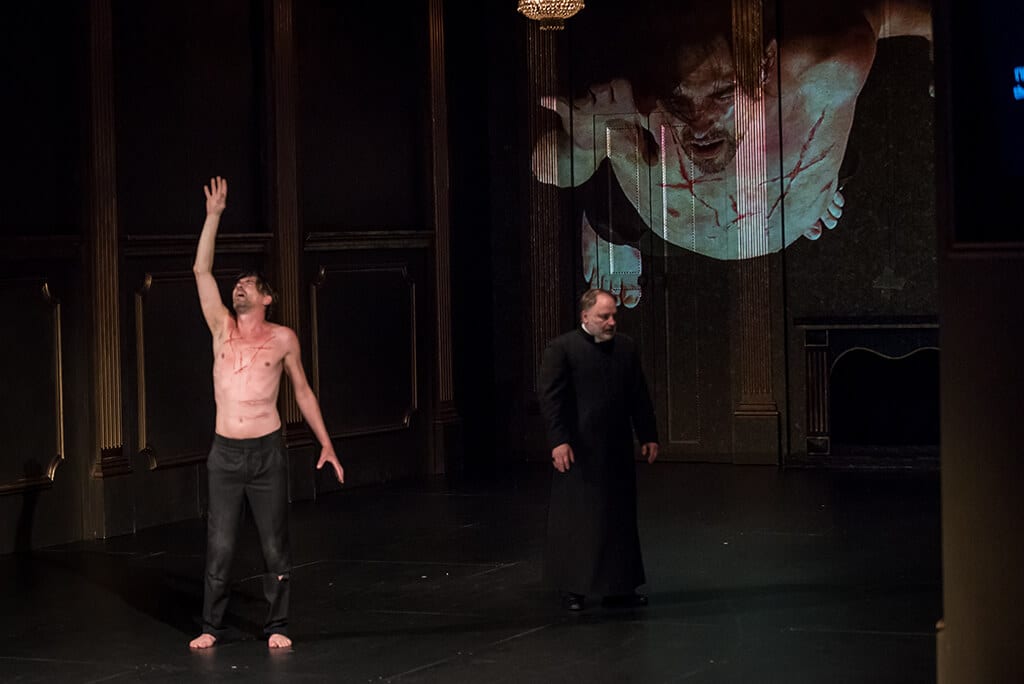Jan Klata’s adaptation of King Lear is a memorable one. The director transports Shakespeare’s drama to the Vatican, where Lear is the Pope and his daughters are priests vying for power. This somewhat surprising idea adds new dimensions to the play, combining a focus on the spirituality of power relations whilst commentating on the state of today’s Catholic Church.
The production is visually stunning with an impressive set design and elaborate detailed costumes. Three rich regal colours prevail throughout the production’s design- black, red and white. Occasionally dashed with touches of silver and gold, the careful use of colour creates a superb aesthetic imagery. Justyna Lagowska’s stage design upholds the production and provides its most striking features.
Fundamentally, Jan Klata serves the audience a perfectly polished picture. However, with a drama like King Lear we must ask ourselves, is that enough? I am not entirely sure. Klata’s concept is solid and well-executed. The flaws of the production are not rooted in its imagery. The problem lies in the pace and rhythm. Some the scenes are too long and exist only for the sake of prolonging the narrative. The text is heavily cut and rearranged which could be the reason why it got lost beneath the layers of expansive visual gimmicks. Still there were beautiful and symbolic moments – blinding of Gloucester by a Judas-esque kiss on his right and left temple. I really liked the fact that Cordelia and the Fool were both played by the same actress and therefore embodied all the virtuous values still left in the senile Lear. Another memorable idea was the presence of a plastic mausoleum-like box confining and isolating the ruler. The pope becomes a prisoner of his own decrepit mind. It is necessary to mention live-streaming which is incorporated in the performance in an extremely clever way. The camera records the performance from above and simultaneously broadcasts it on the back wall of the stage. In this way the audience can watch the actors from a different perspective- this use of dramatic irony hands us a sort of omniscience over the events on stage.
In terms of individual performance, Jerzy Grałek stands out for his portrayal of Lear. He appears both dignified and lost in the world that changes around him. Grałek’s Lear does not try to convince the audience of his argument with big gestures and pretentious speeches apart from the opening. The quiet desperation and tiresome effort to keep his status is heartbreaking to watch. Although his sanity is slowly crumbling, Lear is not ready to leave the Vatican’s political stage just yet. He cannot make a final decision that would leave him useless. The question is – can you be truly ready to let go of power? Likewise, Bartosz Bielenia’s portrayal of the scheming Edmund is laced with homosexual overtones. His triumphant dance to Bronski Beat’s Smalltown Boy is one of the best moments in the production.
Klata undoubtedly concentrates also on the problem of aging and all the consequences connected with that process. He forces the audience to stop and think of old ageing. Throughout the whole performance we are being asked one important question –what is the status or maybe a role of an old man in our society. However, there is no answer given in the end. Klata’s King Lear is definitely worth seeing. It is a superb production, although it sometimes strays from the drama’s philosophical focus. This seems to be the by-product a production heavily dominated by visual richness. Being somewhat uneven, it constantly challenges the audience and invites us to consider the implications of adapting one of Shakespeare’s finest tragedies.





